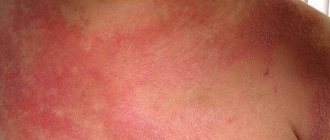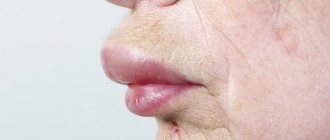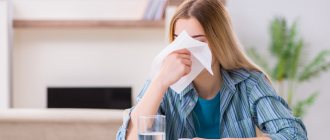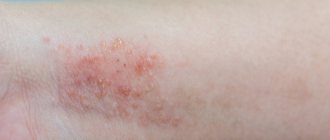What can cause an allergy?
Before we begin to describe the aloe allergy itself, it is necessary to conduct a short review of products containing allergens. So these will be:
- the aloe plant itself. In everyday life, people usually breed Aloe vera, or true aloe. At home, it blooms quite rarely, the main route of allergization is contact or nutritional (if aloe juice gets ingested);
- sabur - boiled aloe juice. Purpose - treatment of certain problems of the digestive system - constipation, lack of appetite, decreased bile secretion. It looks like a reddish-brown or greenish resin. The active ingredient is aloin glycoside;
- tablets 0.05 from aloe vera leaves;
- alcohol solution 80%;
- aloe liniment;
- aloe syrup with iron;
- canned aloe juice;
- aloe extract in the form of a solution for injection 1.5%;
- creams and various cosmetics containing aloe.
The essence of the disease
Aloe is considered one of the “richest” plants. It contains a huge amount of acids, oils and vitamins. Only 2% of the population suffers from an allergic reaction to this plant. The low incidence rate is fully compensated by the severity of the symptoms, as well as the possible danger.
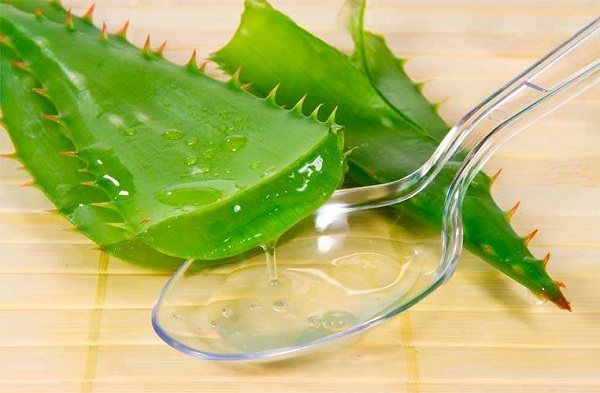
Typically, the reaction develops as a result of contact with:
- the plant itself, including its fresh juice;
- decoction of juice - sabur;
- iron-rich syrup;
- aloe-based tablets.
An alcohol solution of aloe (80%) also causes a powerful reaction. Women who use cosmetics made with the extract of this plant often suffer. Since perfumes contain many additives, most of which are allergens in themselves, symptoms can be very pronounced.
Types of allergic reactions and their treatment
Local reactions: atopic dermatitis, conjunctivitis, urticaria, Quincke's edema.
When inhaling fumes: allergic rhinitis (runny nose), symptoms of bronchial asthma, in severe cases - pulmonary edema.

If ingested: allergic gastritis and gastroduodenitis, allergic intestinal damage (colitis and enteritis). Treatment is carried out both general and special. In addition to etiotropic, that is, antiallergic treatment, there should be:
- diet therapy;
- immunomodulators;
- allergen immunotherapy;
- vitamin therapy;
- preparations of polyunsaturated fatty acids;
- physiotherapy;
- symptomatic therapy (antipruritic, anti-inflammatory, antibiotic therapy, etc.).
Skin lesions due to allergies
It happens when aloe juice comes into contact with the skin, or when ointments, liniments or aloe-based solutions are used.
Atopic dermatitis.
Symptoms: redness of the skin, itching, rash in the form of scales or pinkish papules, most often on the elbows, on the neck and behind the knees. Due to itching, children often scratch their skin and cause infection.
Hives.
Symptoms: pinpoint rash on the body. Treatment: locally - 5% dexamethasone ointment, prednisolone ointment, antibiotics for scratch infections, tar ointment, zinc ointment, ultraviolet irradiation (phototherapy). Also wash in the shower without using a washcloth, laundry with a minimum of synthetic fibers.
Eye damage due to allergies
As an independent disease, it is rare; it can occur when aloe juice accidentally gets into the eyes, usually in children.
Allergic conjunctivitis and blepharitis.
Symptoms: redness and itching of the eyes, lacrimation, swelling of the eyelids, photophobia, often a secondary infection occurs and the inflammation becomes purulent. Treatment: eye drops with diphenhydramine, glucocorticoids, NSAIDs (non-steroidal anti-inflammatory drugs), dexamethasone-based eye ointment (Hydrocortisone), antihistamines such as: Opatanol, Histimet (only for children over 12 years of age and adults), eye gel such as Solcoseryl, eye wash saline solution, physiotherapy.
Respiratory tract damage due to allergies
It happens when pure aloe juice is instilled into the nasal cavity.
Allergic rhinitis, bronchitis, bronchial asthma.
- Rhinitis (often combined with allergic conjunctivitis). Symptoms: nasal congestion, copious discharge of clear exudate, sneezing. Treatment: vasoconstrictor nasal drops - Vibrocil, Nazol, Otrivin, Naphthyzin and sprays like Noxprey. Application: 3-4 drops in each nostril 4-5 times a day. Vasoconstrictor drugs should not be used by adults for more than 7 days in a row, and for children under 12 years of age - for more than 3 days. Drops and sprays with antihistamine and corticosteroid components - Levocabastine (2 times a day, 2 inhalations), Allergodil (1-2 times a day).
- Allergic bronchitis and bronchial asthma. Symptoms: difficulty breathing with whistling, shortness of breath, wheezing, audible even at a distance, cough (usually dry with bronchitis; with asthma, at the end of an attack, thick transparent, so-called “glassy” sputum is released. Treatment: hyposensitizing drugs, antihistamines, corticosteroids. Important : for asthma, you cannot use drugs based on diphenhydramine.During an asthmatic attack: sitting position, intravenous aminophylline with saline solution in a 1:1 ratio (5 to 5 or 10 to 10 milliliters), diuretics (furosemide intravenously), if necessary, intravenous solution of 1% adrenaline.For pulmonary edema: a furosemide tablet under the tongue, if blood pressure is low (upper numbers from 100 and below) - dopamine solution is injected intravenously, if elevated (upper numbers from 140-150 and above) - nitroglycerin intravenously or spray, alcohol inhalation, the use of defoamers. In emergency cases, intravenous morphine solution.
Damage to the gastrointestinal tract due to allergies
This path of allergy development occurs in young children if they have bitten off an aloe stem and started chewing, or in adults when taking aloe preparations (tablets, syrup, sabur).
Allergic gastritis (less commonly esophagitis), gastroduodenitis, colitis, enteritis, liver damage (hepatitis), pancreas (pancreatitis).
Symptoms: with gastritis - nausea, vomiting, cramping pain, with intestinal damage - constipation or, conversely, diarrhea, increased gas formation or vice versa, retention in the intestines, abdominal pain, lack of appetite.

Treatment: if the allergen gets inside - gastric lavage, taking sorbents (activated carbon), in severe cases - intravenous drip of glucose solution with ascorbic acid, solution of potassium permanganate or soda orally (1 teaspoon of soda per 1 liter of water). Hepatoprotectors such as glutargin or protargol. Special treatment against allergies: the same antihistamines and steroid drugs (it should be remembered that diphenhydramine, suprastin and diazolin cause drowsiness, so they should not be used by drivers or if there is any important work to be done).
Absolute contraindications
For some categories of people, it is strictly not recommended to take aloe vera as a therapeutic or prophylactic agent.
The plant can cause unpredictable negative reactions in:
- Pregnant and lactating;
- People with chronic systemic diseases during exacerbation;
- People in a weakened state after treatment of serious illnesses;
- Patients with pathologies of the immune system;
- People with kidney failure and chronic liver disease;
- Persons with hypersensitivity to herbal preparations.
To prevent treatment from causing the opposite effect, the use of aloe preparations should be agreed with your doctor. It is also necessary to strictly adhere to the dosage and take the drug with a sufficient amount of liquid. People with gastric pathologies - gastritis, peptic ulcers - should not drink the concentrated juice of the plant before meals.
If an aloe test shows the danger of a negative reaction, you can either replace the potentially dangerous drug with another, or get an immunotherapeutic vaccination, which will not completely eliminate the allergy, but will significantly alleviate the painful symptoms.
Aloe finds its use in many traditional medicine recipes against ARVI and other respiratory system disorders. The simplest and most effective remedy is prepared from the following components:
- 1 kg of aloe leaves;
- 5 liters of natural honey;
- 5 liters of quality Cahors wine.
Well-washed aloe should be crushed with a meat grinder or blender. Mix the resulting mass with honey and transfer it to a dry, clean jar, which is placed in a dark, warm place and kept there for 3 days. Next, you need to stir in the wine, stir thoroughly and leave for another day. This remedy should be consumed 1 tbsp. l. before every meal.
This gel is prepared from the juice of such plants:
- aloe;
- plantain;
- pharmaceutical chamomile;
- yarrow.
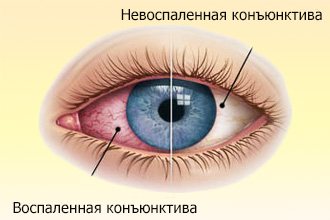
All these juices are taken in equal proportions. Sea buckthorn, grape or burdock oil is used as a softening component. It should be taken in an amount of 1/4 of the total volume of juices.
A mask prepared according to this recipe is used in cases of baldness and severe hair loss. It is prepared from the following ingredients:
- 1 tbsp. l. agave juice;
- 1 tbsp. l. garlic juice;
- 1 tbsp. l. liquid honey;
- 1 yolk.
All this needs to be stirred and rubbed into dry scalp. Put a plastic cap on top and wrap your head in a terry towel. Leave the mask on for half an hour, then wash your hair with shampoo. You can enhance the effect by rinsing your hair with chamomile or nettle infusion.
The aloe laxative recipe is very effective. With the prior approval of a doctor, it can be used even during pregnancy. To prepare it you need:
- 300 grams of aloe leaves;
- 600 grams of honey.
Wash the leaves, cut off their needles and chop them into small pieces. Heat the honey to a temperature of 70C° and pour it over the leaves. Leave the product for 24 hours, then heat, filter and drink 1 tbsp. l. every day an hour before breakfast.
A mixture of aloe with herbs and honey is very good at healing stomach ulcers and fighting the manifestations of gastritis. To prepare it you need to take:
- 100 ml aloe juice;
- 100 ml honey;
- 100 ml cognac;
- 1 tsp. wormwood;
- 1 tsp. hawthorn berries;
- 1 tsp. pine buds;
- 1 tsp. yarrow.
Pour a glass of boiling water over the herbs, leave for half an hour and filter. Mix aloe with honey, cognac and herbal decoction. Pour the resulting product into a clean, dry jar and store in the refrigerator. Use 1 tsp. means 2 hours before each meal.
Traditional methods of treating allergies
- Infuse duckweed in vodka for seven days, dissolving one tablespoon of the resulting tincture in half a glass of water. Take twice a day for one month;
- Pour 50 grams of crushed burdock and dandelion roots into 500-600 milliliters of boiled water, leave for 10-12 hours, then boil and take 3-4 times a day before meals.

Gynecological tincture
This tincture helps eliminate inflammatory processes in the female reproductive system. It also helps to minimize the manifestations of dysplasia during menopause. To prepare the tincture you need to take:
- 100 grams of aloe leaves;
- 100 grams of honey;
- 100 grams of Cahors wine;
- 1 tbsp. l. St. John's wort.
The leaves should be crushed in a blender and mixed with honey. St. John's wort pour a glass of boiling water and boil in a water bath for 5 minutes. Filter the St. John's wort decoction, mix with aloe and honey, and add wine. Transfer the mixture into a dry container and leave for 2 weeks in a dark place. The tincture prepared according to this recipe should be drunk 2 tbsp. l. per day on an empty stomach. The course of treatment is 2 weeks.
Prevention
It is quite easy to protect yourself from this type of allergy, since in our latitudes aloe is not found in the wild, and you can only see it at home on a windowsill and, perhaps, in a greenhouse somewhere in a botanical garden. Cross-allergy to aloe has not been described; this is apparently due to the exotic nature (despite its popularity) of the plant. So:
- remove all plants of the Aloe genus from the house;
- Since aloe preparations are immunomodulators and adaptogens, that is, they are not vital for treatment, but are used as auxiliaries, they can be removed from the home medicine cabinet and replaced with something similar in action but harmless in terms of allergies.
And remember: at the first symptoms of an allergy to aloe, be sure to contact an allergist and follow his instructions. Don't self-medicate! Be healthy!
Immunostimulating agent
This remedy is very effective for reduced body resistance to seasonal colds and general weakness. For it you need to take:
- 100 ml aloe juice;
- 50 grams of walnuts;
- 100 ml liquid honey;
- juice from half a medium-sized lemon.
The nuts need to be ground into powder using a blender and mixed with juice and honey. Before use, the product must sit for at least a day. To achieve the effect, you need to eat 1 tbsp. l. every time before meals.
Against cough
This recipe relieves cough equally well in both adults and children. In addition to its therapeutic effect, it has a pleasant taste and aroma. To prepare it you need to take:
- 100 ml aloe juice;
- 100 ml honey;
- 100 g butter;
- 100 grams of cocoa powder.
All this needs to be stirred until smooth. For treatment you need to eat 2 tbsp. l. means per day, dividing this amount into several parts and consuming during coughing attacks.
Tags: allergies, aloe, face
« Previous entry
Diagnostics
There are several ways to identify an allergen. Among them:
- Provocative test. Applying a small amount of allergen to the mucous membranes.
- Scarification test. The doctor uses a special tool to make a scratch and apply an irritant.
- Skin test. Injecting an allergen into the skin and observing the response.
- Blood test for antibodies.
Drug therapy
There are many drugs designed to alleviate the patient's condition. They should be used depending on the indications.
Histamine H1 receptor blockers (Cetrin, Fenistil, Allergodil), cromones (Intal), glucocorticosteroids (Nasonex, Elokom).
Tablets, drops (nasal, eye)
Local administration is permissible only after excluding infectious inflammation.
Capsules, injections, powders, suspensions
Antiallergic drugs are combined with sorbents (Smecta, Enterosgel).
External products should not be applied to damaged areas of the skin (wounds, ulcers).
In addition to antihistamine tablets, beta2-agonists (Salbutamol) are indicated, and in severe cases, Prednisolone.
A doctor must prescribe any pharmacological agents - the table reflects only the general principles of the approach to treatment.
An allergy to aloe may appear immediately or a little later (for example, after a few days).
Allergy to pollen. hay fever
Pollen is the most common allergen. Hay fever, or pollen allergy, is an allergic disease caused by pollen from trees, grasses, shrubs, etc.
We recommend reading: Does kefir help with heartburn? What to drink for heartburn at home
Pollen allergy occurs when the immune system reacts inappropriately to pollen from various plants. Pollen from the surrounding air settles on the mucous membranes of the nose, eyes and mouth, enters the bronchi, comes into contact with the skin, and allergy symptoms occur in those sensitive to it.
Currently, up to 15% of the population in Russia suffer from pollen allergy; this is the most common allergic disease.
The main nosological manifestations of pollen allergy are seasonal allergic rhinitis, conjunctivitis (seasonal allergic rhinoconjunctivitis) and pollen bronchial asthma.
Symptoms . You may have a pollen allergy (hay fever) if you notice one or more of the following symptoms every year around the same time in spring or summer:
- uncontrollable sneezing (sneezing attacks), itchy nose, excessive watery nasal discharge (runny nose) or nasal congestion (allergic rhinitis, allergic rhinitis);
- itching and redness of the eyes, watery eyes (allergic conjunctivitis);
- itching of the palate, tongue (allergic pharyngitis);
- dry cough, difficulty breathing, shortness of breath or suffocation, wheezing in the chest (pollen bronchial asthma);
- skin rashes, itchy skin (atopic dermatitis or allergic urticaria).
The main allergenic plants: trees, cereals and weeds (most often, allergies are caused by the pollen of certain grasses).
Periods or seasons of exacerbation of hay fever:
- spring;
- early summer;
- late summer or summer-autumn.
The highest concentration of pollen in the air occurs between June and August. Also, early spring can bring trouble to people suffering from hay fever if they live in places where there is a lot of pollen in the air from oak, birch and other trees. Pollen causes allergic rhinitis, which causes runny nose, sneezing, and watery eyes.
In the classic case, an allergy develops to pollen of two or three plant species, and the exacerbation of the disease lasts about a month. However, there are frequent cases of multiple sensitization (polysensitization), when the exacerbation of the disease continues almost throughout the warm season.
How to identify an allergen?
- Allergy test. A solution containing a potential allergen is injected under the skin in a small amount. The doctor observes the reaction for an hour. If there is redness, itching, or rashes, the test is considered positive.
- Provocative test. A solution with an allergen or aloe juice is applied to the mucous membranes of the nose, eyes or tongue. Swelling and redness indicate the presence of an allergy.
- Blood chemistry. If histamine is present, an allergy is diagnosed.
- Scarification test. The doctor makes an incision or puncture on the arm, after which he applies the irritant.

